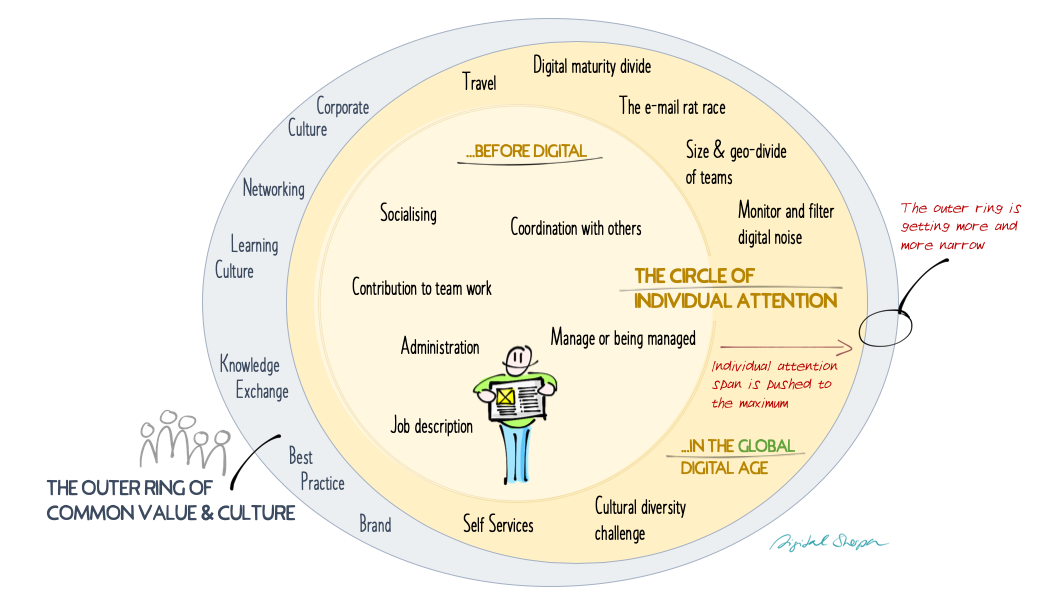Why ’digital empowerment of people’ still is a paradox in today’s world
“We primarily work in analogue ways, using digital tools,” is what a client just recently told me. It was part of the reflection on the current situation and the question of why things haven’t gotten better with the availability of new ’tools’.
In another mandate, I could observe how people struggled with the adoption of ’new ways of working’. It didn’t matter that the level of commitment was (or better, is) incredibly high and that everyone had agreed beforehand, that the cautiously evaluated way forward was the most promising option.
In a third instance (the initiation of a new project) I asked the question “what does internal communication mean in your place?”. The answers of the core team quickly tipped towards information overflow, a cc-culture for email driven by fear and uncertainty and the lack of clarity for standards, practices and a common denominator.
The limits to individual bandwidth
All of the above made me realise, that the result of digitalisation combined with a globalised business world is pushing the limits of an individual worker’s bandwidth to the absolute limit. If there were a particular focus and limit to things people could do 20 years back, there seems to be the expectation that digital tools extend that ability x-fold - which they don’t.
Today’s business world puts so much on the individual’s plate that the day doesn’t have enough hours to cope with everything. The attempt to limit email use to business hours and stop people from burning out by being "always on" is only a symptom of that problem.
If there weren’t an insane communication overkill, there wouldn’t be the need to cut it off deliberately.
We need a different mindset to benefit from the digital promises:
Before we can indeed access what digital can offer us at the workplace, we need to change something…or better some things:
- The way we use digital tools in the day to day work needs to be better agreed on a team level - we need to be more conscious for the common denominator for how to do things
- Moving stuff to the next in line cannot be about ’getting rid of it’ anymore - we need to develop a more recipient focussed work and communication culture
- Managers must accept that people don’t scale indefinitely, just because they are available - we need a culture that creates room for a life outside the email rat race (and no: enterprise social networks or persistent chat tools aren’t the answer)
- The "we" needs to have room in corporate culture beyond mission statements and HR values - we need a more explicit emphasis on how we can drive things together (and no: a knowledge management tool or innovation community aren’t the answer)
Tools need to be part of the solution - not the answer.
Being asked, what my most successful project was so far, I had the answer straight at hand: a project, in which I was able to support a program team in developing a new way of staying coordinated and create transparency for what’s going on and what’s lying ahead.
Digital tools only played an enabling role. The success factors were a common language (terminology and structure) and a shared commitment to exchange and ’togetherness’ in the program. It was a human-driven solution that was only connected by tools.
- Tools can create transparency for interested people.
- Tools can scale capacities if people make sure that no one is left behind
- Tools can bring people together, that care about being one team
- Tools can make knowledge accessible and usable if people have the bandwidth to share and consume
Tools are never the answer.
Directives and functional training are not the answer either.
It’s a conscious agreement on how we will be doing things in the future, not just that we will be doing them. That agreement needs to be established, led, managed and be part of the future of work as much as all the digital nuts and bolts will be part of it.

